WARNING: This review discusses the entire plot of Hit Man, spoilers abound
“I don’t want to be pulled into memorable conversations,” Gary Johnson says about a third of the way through Hit Man. At this point in the movie Johnson is pretending to be a hired killer named Ron, but within this pretense he is speaking the truth of Gary, a nerdy teacher and secret narc. He is also speaking this in a movie made by Richard Linklater, a writer and director who is drawn to the possibilities of memorable conversations, most notably in the Before trilogy but going all the way back to the seemingly random ramblings of his breakthrough feature Slacker. And later on, Gary seems to be more in tune with Linklater’s vibe, telling his philosophy students that “over the years, I’ve come to believe that the truth is created through the integration of different points of view.” “The integration of different points of view” is a fancy way to describe two people talking to each other and over 40 years Linklater has embraced and celebrated the openness of this simple dynamic. Here he follows it into a disturbing place.
Early conversations in Hit Man are not promising. One in particular between Gary and fellow undercover cop Jasper (whose suspension for beating up teenagers leads to Gary stepping into his role) made me fear Linklater had been whacked with the Netflix stick. It’s all ill-lit tight close-ups with no space to breathe — longtime editor Sandra Adair has some rough cuts here and later in the film. While the movie unfortunately suffers from the streamer’s flat sheen, the conversations eventually open up. Linklater shows bodies interacting in booths and farms and memorably in a tub. He mostly doesn’t hit the lengthy tracking shots of past work, where the steps characters take along streets and alleys mirrors their routes down uncertain conversational paths, but the scenes between Gary and Madison, a woman he meets on assignment and quickly starts seeing off the books, do open up for some strolls that are suspiciously similar to others in Linklater’s oeuvre. They give actors Glen Powell (who co-wrote the movie with Linklater) and Adria Arjona room for reaction, for sussing each other out and for making moves when they like what they see.
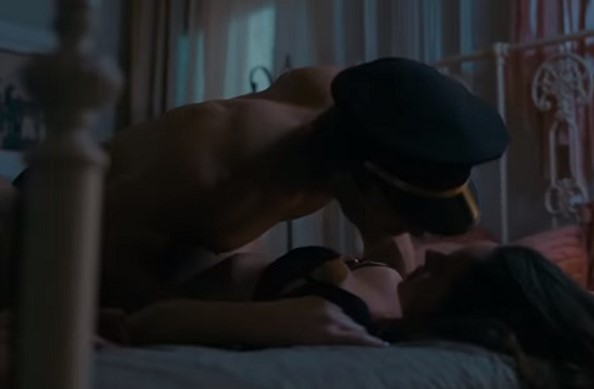
And before that, the first conversation between Gary as a faux hit man and his mark plays out in its entirety. Linklater occasionally cuts to Gary’s fellow cops observing and critiquing his spiel like baseball announcers watching a pitcher work a tough slugger, but the emphasis is on how one dude is able to convince another that he will kill a third. Gary’s ultimate goal is to get his client to openly say they will pay money to kill someone, allowing the cops to arrest them; Jasper is blunter about the work at hand: “Your job is to put these assholes in prison.” Gary Johnson was a real guy who really did have an incredibly successful career as an undercover “hit man” and Hit Man derives from a 2001 profile by Skip Hollandsworth. In it Johnson lays out his philosophy: “‘What I’m really there to do is assist people in their communication skills,’ Johnson tells me one afternoon, sitting on his recliner in his living room. ‘That’s all my job is—to help people open up, to get them to say what they really want, to reveal to me their deepest desires.’” On the surface this is placid and nearly poignant, but the undercurrent is more disturbing than Jasper’s open entrapment — it suggests Johnson as a counterpart to the serial killer in Kiyoshi Kurosawa’s Cure, who mesmerizes his victims into forgoing societal restrictions and doing what they really want, which is of course to kill those closest to them.
Getting a person to admit they want to kill someone requires making a connection, understanding the client’s feelings and tailoring the pitch to integrate two points of view into an agreement. The formerly isolated Gary finds he has a facility for this, which he augments with costume changes and make-up and vocal tics. Linklater plays this for laughs and it is damn funny, one of Gary’s hit men has a ridiculous British accent that is all the more hilarious when talking about sticking a severed head in a Winn-Dixie bag. But each comedic riff ends with the same punch line, Gary’s client staring at the camera as their mug shot is taken, expression maybe blank or maybe bewildered but irrevocably caught, the viewer’s mind superimposes bars over their faces. They were screwed the moment they decided to talk with Gary.
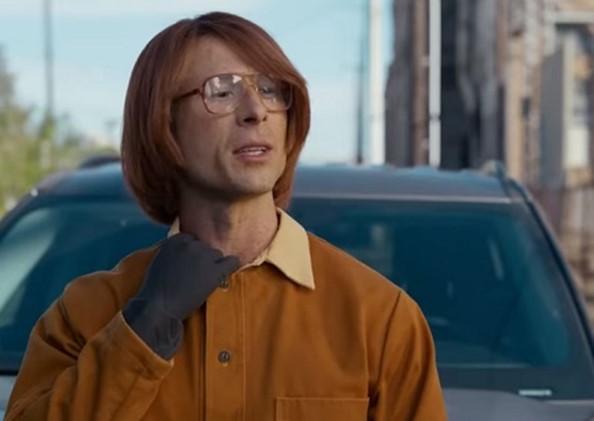
A classic film noir is about fate, in the sense that characters are doomed from the start by their choices and class restrictions, but also by the fact that they are doing bad things in the 40s and 50s when the Hays Code in particular and censors in general would not allow characters to do crime without being punished. The standard noir setup also involves a guy being dumb for a dangerous dame and Gary’s infatuation with Madison upends his righteous belief that the people he talks to deserve to be arrested. Madison seems more despairing than angry, trapped in a marriage to someone restrictive if not abusive and unable to see any other option. Also, she is hot and charming and charmed by Gary’s persona of Ron, who gives off laid-back yet alpha vibes. They have immediate chemistry, so much so that Gary goes against protocol and convinces Madison not to go forward with the hit, to get a divorce instead. And when she calls “Ron” a short time later to meet up not as client and professional but two consenting adults, he’s ready to continue the charade — and just as important, she’s ready to go along with dating a hit man. Their connection has self-imposed limits, with both agreeing to live in the moment and not dig too deep into activities outside of fucking each other’s brains out, but it is a very real connection based on what appears to be a clear choice on Madison’s part, to accept that Roy does bad things and just roll with it.
This can’t last of course — the two run into Madison’s ex at a club and this leads to a confrontation with repercussions that drive the rest of the film. But what comes immediately before this interests me just as much, a seemingly throwaway conversation of Madison wondering why the moon’s control over the tides does not extend to the mostly water-filled human body (Madison has clearly had a few choice liquids of her own here) and Gary/Ron exasperatedly pushing back using scientific explanations of immutable equations. This has metaphorical resonance but is also 100 percent pure uncut Linklaterian conversation, two people integrating their off-kilter points of view where the integration is the point rather than any resolution; it is not a coincidence that this takes place as the two are in motion. Like Celine and Jesse, the couple at the heart of the Before trilogy, Gary and Madison are building a relationship by walking and talking.
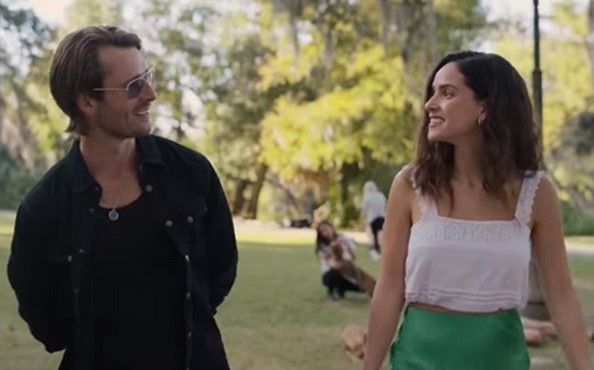
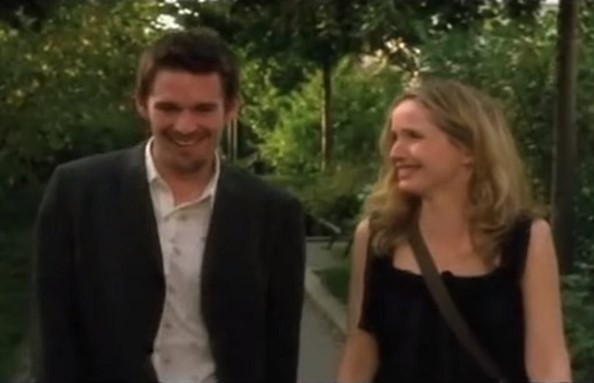
And fucking and killing. Their talks come before and during and after sex, which is implied but generally elided in the Before flicks. And while Celine and Jesse are extremely capable of emotional violence, as anyone who has seen Before Midnight knows, the foundation of their relationship doesn’t lead to actual violence. Gary finds out his latest client is none other than the ex looking to put a hit on Madison; Gary reveals himself to the ex and blows up the deal rather than arrest him (doing so would expose his relationship) and warns Madison of the ex’s intentions. The ex later shows up dead, shot in the heart in a way that Gary once described — fictitiously, of course — to Madison as the best way to kill a person. Gary confronts Madison and she reveals she shot the ex, in his sleep no less, and maybe a six-figure life insurance policy was a factor as well. And a flabbergasted Gary reveals that’s one more killing than he’s ever done, that he’s not Ron at all but a narc with a heart. Madison chucks him out, and Jasper — who has seen her and “Ron” together — is waiting to put Gary undercover again, to get Madison to confess to killing her ex.
Lies compounded and frantically concealed, a falling-out as lovers lose trust, a murder where the consequences can only be delayed for so long — we’re definitely in noir territory here. But Linklater and Powell make two big swerves instead of running on the rails of fate. This has to be the first noir where the antiheroes use the Notes app to thwart the law, as a wired-up Gary stages an argument with Madison while feeding her lines on his phone. The words of the conversation portray two people who were never that close and are permanently closing the connection between them; the texts undermine this and in fact bring them back together, along with some increasingly expressive facial expressions from Powell and Arjona. Madison chose to accept “Ron” as a killer, and Gary accepts Madison as a murderer. What they have between them, renegotiated with glares and raised eyebrows and lustful looks, is too good to let a little homicide get in the way.
While the other cops buy the performance, Jasper does not. He ambushes Gary and Madison with the threat of exposing them, looking for a cut of the insurance money while forgetting the first rule of blackmail — you are putting your life up as a stake. Madison drugs his beer, knocking him out but leaving him breathing feebly on the floor. And then Gary the fake hit man becomes a real killer. He ties a plastic bag around Jasper’s head, letting him slowly suffocate as he and Madison negotiate their relationship one more time. They’re on equal terms, willing to kill for each other and to move past the threats to their existence as a couple. Their conversation is clever and horny and plays out as Linklater turns his camera on Jasper sucking his final wind, plastic bag settling over a face that won’t be saying anything to anyone anymore.
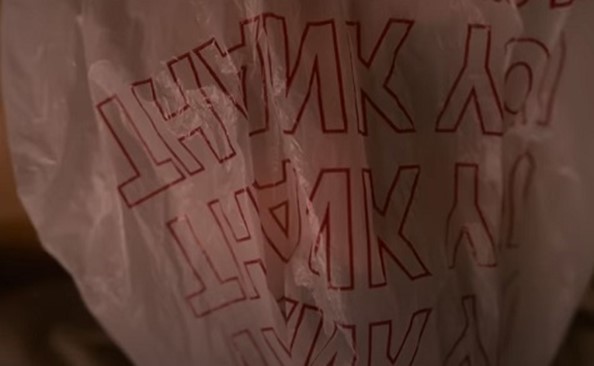
And why not? It’s 2024, no censorious prude is going to stop Linklater and Powell here. And no heroic lawman (or meddling insurance investigator) is going to stop Gary and Madison. The police are largely portrayed as outright crooked like Jasper or entirely reliant on Gary getting people to pre-emptively confess to murder for hire, essentially creating crimes rather than solving them. The movie explicitly equates “Ron’s” hit man activities with Gary’s narc work, with both arguing that they do what they do to protect others. But Gary as Ron and as himself does what he does because he wants to. And because he wants to do it for someone else.
I think that is what throws people about the ending, which jumps ahead several years and shows Gary and Madison with two young kids, living a fulfilling life together with absolutely no repercussions. It’s a sunny ending instead of noir’s doom or what neo-noir would bring to the table in the 90s, where one person makes it out at the expense of another, implying moral judgment if not justice. Linklater does not do doom or moral judgment, so ending with contentment and reward for two killers may feel like a whimsical shrug, which the cutesy pre-credits dedication to the real Gary Johnson (who did not have a Madison in his life, although he did similarly talk an abused woman out of his services) adds to. Hit Man has plenty of fun sexy “adult” situations, but its ending requires the adult recognition that “good” doesn’t always win, and that you have to make up your own mind about what you’re seeing on the screen. Linklater often doesn’t favor an explicit point of view, but as Nikita Komarov writes in his superb piece on Dazed and Confused and the most ostensibly outrageous part of that movie (the hazing scene), it doesn’t mean he’s indifferent: “The presence of both perspectives isn’t there to downplay one and excuse the other but to register them, in real time, as two opposite yet equally true personal experiences of the same thing.” It’s just that here, two perspectives define themselves through the elimination of others.
Linklater and his contemporary Quentin Tarantino are the two great cinematic conversationalists of the past 40 years. Tarantino views conversation as competition, people may meander but they’re generally searching for an edge. Linklater views conversation as exploration, where the meandering and possibility is the point. Here he’s exploring his own past conversations and where a conversation might lead, how a spark between two people leads them to choose different paths for themselves and fatal paths for those in their way. And the choice to diverge so drastically from the real Johnson’s life lets the conversations here go to where Linklater has rarely let them go before. Linklater and Powell’s script can be quite blunt, repeatedly bringing up the idea of how readily or not a person can change, and Gary at the end muses that he’s added parts of Ron to his life now*. But that doesn’t happen without that infatuation with Madison, just as her life away from her ex doesn’t happen without Gary. Earlier in the movie Gary’s own ex-wife, who he’s friendly with, suggests he needs to adapt from the nice-guy-but-cold-fish personality that ultimately drove her away, to find “a different kind of survival technique that would involve another person.” Gary and Madison not only survive but thrive and instead of denying the darkness in this, Linklater lets it into his worldview of connection, accepting that it too is where a conversation can take you. Talk talk, kiss kiss, bang bang.
* In a funny self-referential twist, Powell already embodied the mix of philosophizing nerd Gary and suave dude Ron in his breakout role in Linklater’s Everybody Wants Some!!, as the pontificating jock Finnegan


